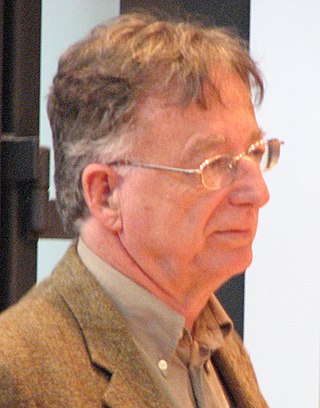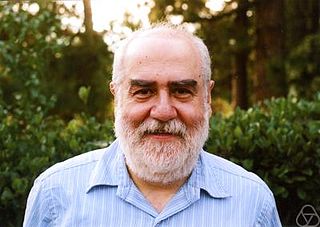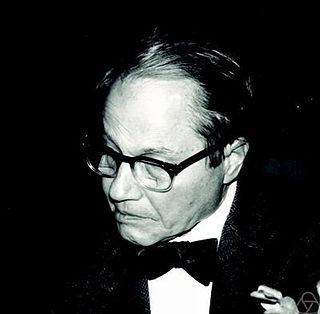Related Research Articles

Lars Valerian Ahlfors was a Finnish mathematician, remembered for his work in the field of Riemann surfaces and his textbook on complex analysis.

Paul Julius Oswald Teichmüller was a German mathematician who made contributions to complex analysis. He introduced quasiconformal mappings and differential geometric methods into the study of Riemann surfaces. Teichmüller spaces are named after him.

Charles Louis Fefferman is an American mathematician at Princeton University, where he is currently the Herbert E. Jones, Jr. '43 University Professor of Mathematics. He was awarded the Fields Medal in 1978 for his contributions to mathematical analysis.

Alberto Pedro Calderón was an Argentinian mathematician. His name is associated with the University of Buenos Aires, but first and foremost with the University of Chicago, where Calderón and his mentor, the analyst Antoni Zygmund, developed the theory of singular integral operators. This created the "Chicago School of (hard) Analysis".
The Finnish Society of Sciences and Letters is a Finnish learned society for natural sciences, social sciences and humanities. It is a bilingual science academy and the oldest of the four science academies in Finland.
In mathematical complex analysis, a quasiconformal mapping, introduced by Grötzsch (1928) and named by Ahlfors (1935), is a homeomorphism between plane domains which to first order takes small circles to small ellipses of bounded eccentricity.

Dennis Parnell Sullivan is an American mathematician known for his work in algebraic topology, geometric topology, and dynamical systems. He holds the Albert Einstein Chair at the City University of New York Graduate Center and is a distinguished professor at Stony Brook University.
Lassi Päivärinta is a Finnish mathematician, one-time professor of applied mathematics at the department of mathematics and statistics at the University of Helsinki. Päivärinta's research is mostly in the fields of inverse problems and partial differential equations.

Gunther Alberto Uhlmann Arancibia is a mathematician whose research focuses on inverse problems and imaging, microlocal analysis, partial differential equations and invisibility.
In mathematics, the measurable Riemann mapping theorem is a theorem proved in 1960 by Lars Ahlfors and Lipman Bers in complex analysis and geometric function theory. Contrary to its name, it is not a direct generalization of the Riemann mapping theorem, but instead a result concerning quasiconformal mappings and solutions of the Beltrami equation. The result was prefigured by earlier results of Charles Morrey from 1938 on quasi-linear elliptic partial differential equations.
In mathematics, a quasicircle is a Jordan curve in the complex plane that is the image of a circle under a quasiconformal mapping of the plane onto itself. Originally introduced independently by Pfluger (1961) and Tienari (1962), in the older literature they were referred to as quasiconformal curves, a terminology which also applied to arcs. In complex analysis and geometric function theory, quasicircles play a fundamental role in the description of the universal Teichmüller space, through quasisymmetric homeomorphisms of the circle. Quasicircles also play an important role in complex dynamical systems.
Matti Vuorinen is a Finnish mathematician working in the area of classical analysis. His main topics of interest include geometric function theory, quasiregular and quasiconformal mappings, computational potential theory, and generalized hyperbolic geometry.

Frederick William Gehring was an American mathematician who worked in the area of complex analysis.

Michael Grain Crandall is an American mathematician, specializing in differential equations.

Olli Erkki Lehto was a Finnish mathematician, specializing in geometric function theory, and a chancellor of the University of Helsinki.

Gaven John MartinFRSNZFASLFAMS is a New Zealand mathematician. He is a Distinguished Professor of Mathematics at Massey University, the head of the New Zealand Institute for Advanced Study, the former president of the New Zealand Mathematical Society, and former editor-in-chief of the New Zealand Journal of Mathematics. He is a former Vice-President of the Royal Society of New Zealand [Mathematical, Physical Sciences Engineering and Technology. His research concerns quasiconformal mappings, regularity theory for partial differential equations, and connections between the theory of discrete groups and low-dimensional topology.
Kurt Strebel was a Swiss mathematician, specializing in geometric function theory.

Kari Jorun Blakkisrud Hag is a Norwegian mathematician known for her research in complex analysis on quasicircles and quasiconformal mappings, and for her efforts for gender equality in mathematics. She is a professor emerita of mathematics at the Norwegian University of Science and Technology (NTNU). With Frederick Gehring she is the author of the book The Ubiquitous Quasidisk.
Pekka Pertti Tukia is a Finnish mathematician who does research on Kleinian groups and their geometric properties.
Juha Heinonen was a Finnish mathematician, known for his research on geometric function theory.
References
- 1 2 3 4 "Kari Astala, Curriculum Vitae" (PDF). Department of Mathematics, Aalto University.
- ↑ Kari Astala at the Mathematics Genealogy Project
- ↑ Astala, Kari (1994). "Area distortion of quasiconformal mappings" (PDF). Acta Mathematica. 173: 37–60. doi: 10.1007/BF02392568 .
- ↑ Astala, K.; Lassas, M.; Päivärinta, L. (2005). "Calderón's inverse problem for anisotropic conductivity in the plane". Comm. Partial Differential Equations. 30 (1–2): 207–224. arXiv: math/0401410 . doi:10.1081/PDE-200044485.
- ↑ Astala, K.; Päivärinta, L. (January 2006). "Calderón's Inverse Conductivity Problem in the Plane". Annals of Mathematics. Second Series. 163 (1): 265–299. doi: 10.4007/annals.2006.163.265 . JSTOR 20159954.
- ↑ "Publications (with online links), K. Astala". Aalto University.
- ↑ Astala, K. (1998). "Analytic aspects of quasiconformality" (PDF). Proceedings of the International Congress of Mathematicians, 1998, Berlin. Vol. 2. pp. 617–626.